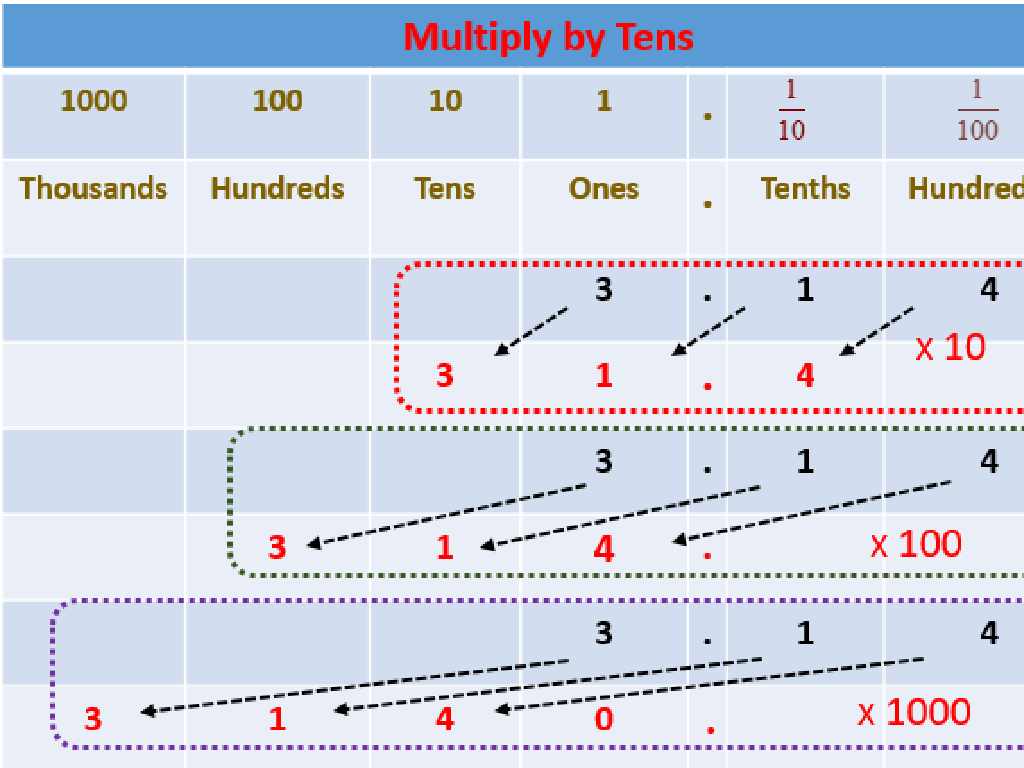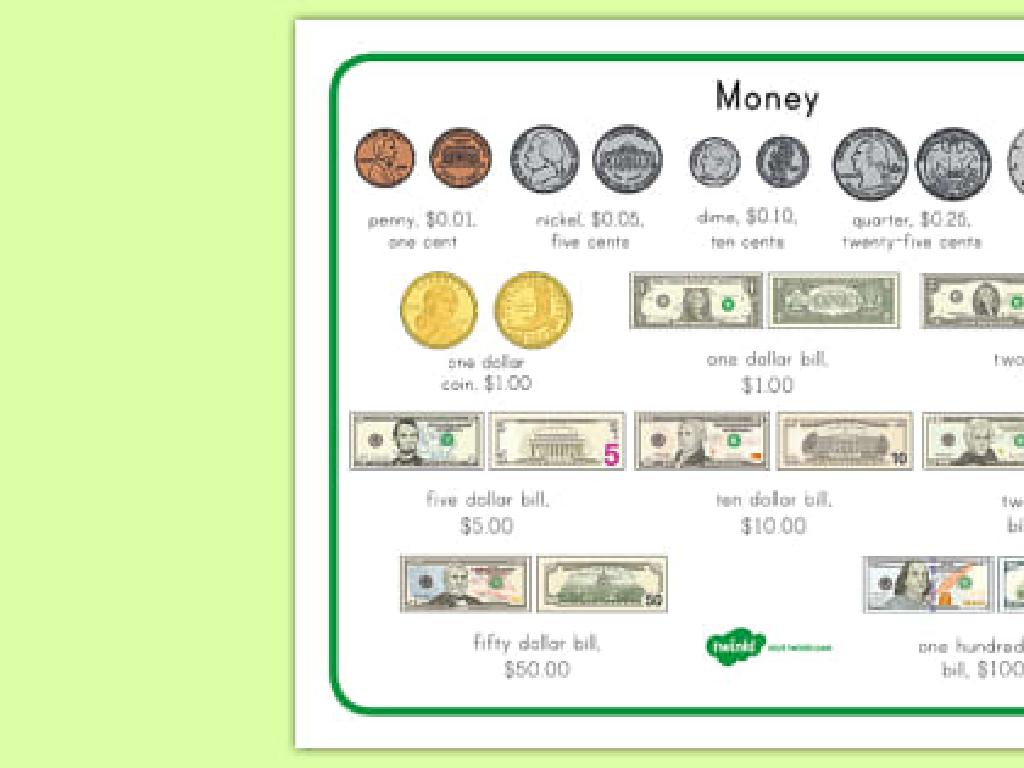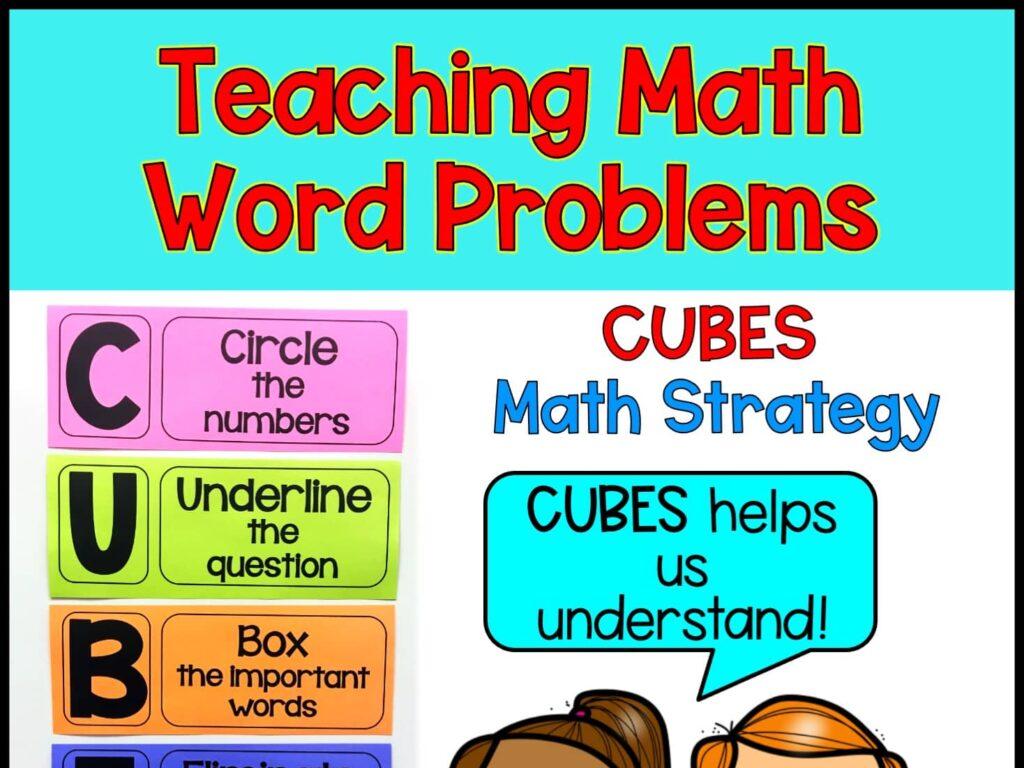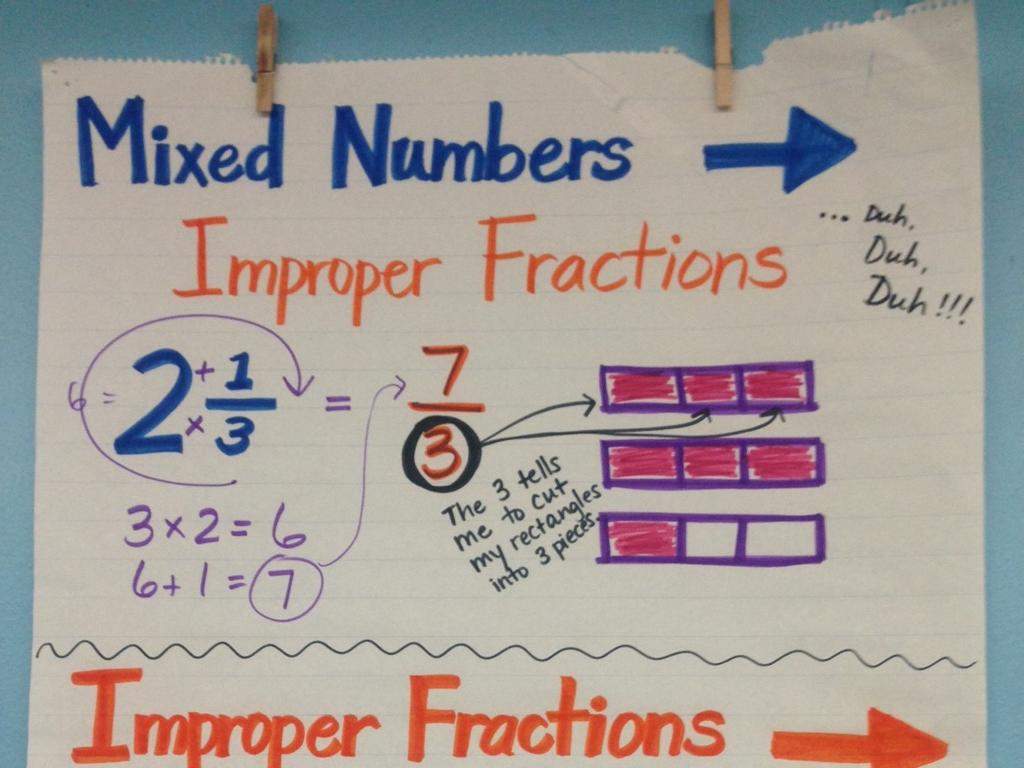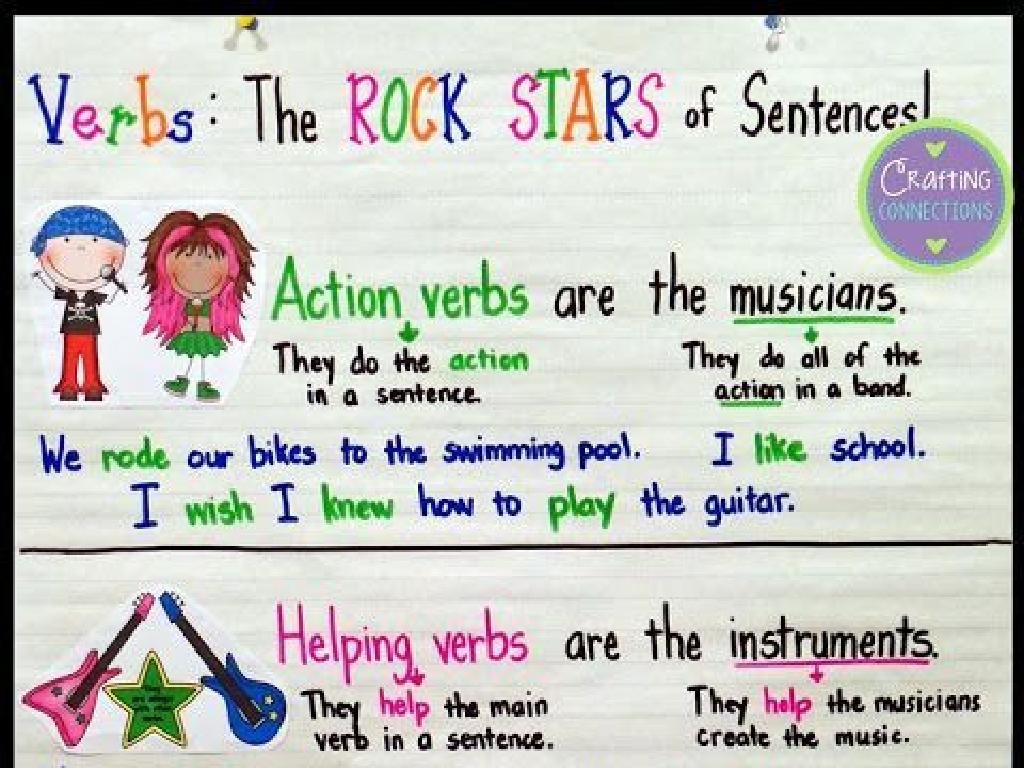Choose Between Subject And Object Personal Pronouns
Subject: Language arts
Grade: Third grade
Topic: Pronouns
Please LOG IN to download the presentation. Access is available to registered users only.
View More Content
Understanding Pronouns: Subject vs. Object
– Pronouns take place of nouns
– Pronouns make sentences smoother
– Subject pronouns: I, you, he, she, it, we, they
– Used as the subject of a sentence: ‘He runs fast’
– Object pronouns: me, you, him, her, it, us, them
– Used as the object of a sentence: ‘The ball hit him’
|
This slide introduces the concept of pronouns and their importance in everyday language. Pronouns are used to avoid repeating nouns, making communication more efficient and less repetitive. Today’s lesson focuses on distinguishing between subject and object personal pronouns. Subject pronouns are used when the pronoun is the subject of the sentence, performing the action. Object pronouns are used when the pronoun is receiving the action. Encourage students to practice by identifying and using both types of pronouns in sentences. Provide examples and create simple exercises where students can choose the correct pronoun to complete a sentence.
Understanding Pronouns
– Pronouns replace nouns
– Examples: he, she, it, they
– ‘He’ for boys, ‘she’ for girls, ‘it’ for things, ‘they’ for groups
– Pronouns simplify sentences
– Instead of ‘Lisa is tall. Lisa has a hat.’, say ‘Lisa is tall. She has a hat.’
– Practice using pronouns
– Find a noun in a sentence and replace it with a pronoun
|
This slide introduces the concept of pronouns to third-grade students. Pronouns are words that can take the place of nouns, making sentences less repetitive and easier to say. Use examples that are relatable to the students, such as using ‘he’ or ‘she’ when talking about a friend or ‘it’ when referring to an object. Encourage students to identify nouns in sentences and think about which pronouns could replace them. This will help them understand how pronouns function and why they are useful. In the next class, we can practice this skill with a fun activity where students replace nouns in their favorite storybooks with pronouns.
Subject Personal Pronouns
– Pronouns as sentence subjects
– Subject pronouns do the action
– Example: ‘He runs fast.’
– ‘He’ is doing the action of running
– Common subject pronouns
– I, you, he, she, it, we, they
|
This slide introduces subject personal pronouns, which are used when the pronoun is the subject of a sentence and is responsible for the action. Explain that the subject is who or what the sentence is about and is doing something. Use simple examples like ‘He runs fast’ to illustrate this concept, where ‘He’ is the subject pronoun doing the action of running. List out the common subject pronouns and have students practice identifying them in sentences. Encourage students to create their own sentences using each subject pronoun to reinforce their understanding.
Understanding Object Personal Pronouns
– Object pronouns in sentences
– Pronouns receive the action
– Like in ‘Laura saw her’, ‘her’ is the object pronoun.
– Examples: me, you, him, her, it, us, them
– ‘Me’ for I, ‘him’ for he, ‘us’ for we, and so on.
– Practice using object pronouns
– We’ll do fun activities to learn these pronouns!
|
This slide introduces object personal pronouns, which are used when the pronoun is the object of a sentence, meaning they receive the action. Start by explaining the concept with simple examples and ensure that students can identify the object of a sentence. Use relatable sentences to illustrate the use of each object pronoun. Encourage students to come up with their own sentences using object pronouns. Plan a few interactive activities where students can practice swapping subject pronouns with object pronouns to reinforce their learning.
Choosing the Right Pronoun
– Who is doing the action?
– ‘I am!’ means use a subject pronoun
– Examples: I run, I eat, I sing
– ‘It’s done to me!’ means use an object pronoun
– Examples: He hugged me, She called me, They saw me
– Practice with examples
– We’ll practice picking the right pronouns in sentences
|
This slide is aimed at helping third-grade students understand the difference between subject and object personal pronouns. Start by explaining that the subject of a sentence is the one doing the action, and therefore requires a subject pronoun such as ‘I’, ‘you’, ‘he’, ‘she’, ‘it’, ‘we’, or ‘they’. Conversely, if the action is being done to someone, then an object pronoun like ‘me’, ‘you’, ‘him’, ‘her’, ‘it’, ‘us’, or ‘them’ is needed. Provide clear examples for both cases and engage the class with sentences where they have to choose the correct pronoun. This will reinforce their understanding and help them grasp the concept of subject and object pronouns in a practical way.
Let’s Practice Pronouns!
– Choose correct pronoun: ‘____ (I/me) went to the store.’
– Choose correct pronoun: ‘Mom hugged ____ (I/me).’
– Think: Who is doing the action?
– ‘I’ does the action, ‘me’ receives the action.
– Subject vs. Object Pronouns
– ‘I’ is for who does it, ‘me’ is for who receives it.
|
This slide is an interactive practice for students to understand the difference between subject and object pronouns. The first sentence requires a subject pronoun because the pronoun is doing the action of going to the store. The second sentence requires an object pronoun because the pronoun is receiving the action of the hug. Remind students that the subject of the sentence is the ‘doer’ of the action, while the object is the ‘receiver’ of the action. Encourage students to say both options out loud and decide which sounds correct. Provide additional examples if needed and praise correct answers to reinforce learning.
Choosing Subject & Object Pronouns
– Understanding pronouns in sentences
– Pronouns take the place of nouns
– Fill in the blanks with correct pronouns
– ‘She is my best friend and I trust her with my secrets.’
– Discuss the reasons for our choices
– Why do we use ‘she’ at the beginning and ‘her’ later?
– Practice makes perfect
|
This slide is aimed at helping third-grade students understand the difference between subject and object personal pronouns. Begin by explaining that pronouns are words we use instead of nouns to avoid repetition and make sentences smoother. Then, present the example sentence and guide the students to fill in the blanks with ‘She’ as the subject pronoun and ‘her’ as the object pronoun. Discuss why ‘She’ is used when the pronoun is the subject of the sentence and ‘her’ when it is the object. Encourage the students to practice by creating similar sentences and identifying the correct pronouns to use. This will help solidify their understanding of how to choose between subject and object personal pronouns.
Class Activity: Pronoun Hunt
– Find sentences with pronouns in a book
– List 5 sentences using pronouns
– Identify subject and object pronouns
– Is the pronoun doing the action (subject) or receiving it (object)?
– Share reasons for pronoun choices
– Explain why the author used ‘he’ instead of ‘John’
|
This activity is designed to help students recognize and differentiate between subject and object pronouns in context. Encourage students to choose a book they enjoy and look for sentences where pronouns are used. They should list these sentences and then identify whether the pronouns are subjects or objects within the sentence. When sharing, prompt students to explain their reasoning for the pronoun’s role and discuss how it fits into the sentence. This will help them understand the function of pronouns in grammar. Possible activities: 1) Pair students to compare sentences they’ve found. 2) Create a classroom chart of subject vs. object pronouns. 3) Have students write their own sentences using pronouns. 4) Role-play with pronouns to reinforce the concept. 5) Use a story and have students replace nouns with pronouns.
Mastering Pronouns: Conclusion
– Excellent work on pronouns!
– Pronouns make sentences flow
– They stand in for nouns to avoid repetition
– Practice using pronouns often
– Try them in your daily conversations and stories
– Keep learning and having fun!
|
This slide wraps up the lesson on subject and object pronouns. Reinforce the concept that pronouns are used to replace nouns, which helps sentences to sound better and not be repetitive. Encourage the students to continue practicing by using pronouns in their everyday speech and writing. Remind them that learning is a continuous process and that they should keep applying what they’ve learned in fun and creative ways. You can suggest that they write short stories or dialogues as practice, and praise their efforts in understanding and using pronouns correctly.

